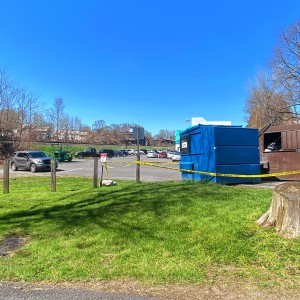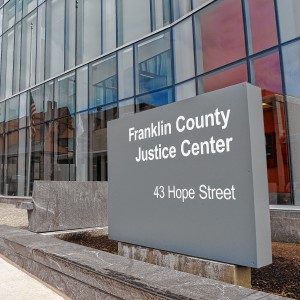Healey outlines local aid levels ahead of budget rollout
| Published: 02-23-2023 5:15 PM |
The budget that Gov. Maura Healey will file next week will boost the largest source of state education aid by almost 10% in what the administration said would be the biggest percentage increase since the last millennium.
Local officials and then the general public got a preview of the first Healey-Driscoll state budget on Thursday when the administration shared preliminary local aid estimates based on the spending bill (H 1) that Healey will file by Wednesday. It was the first detailed look at some of the ways in which the new governor and her administration plan to make some of her priorities and campaign promises reality, and it offered an early check-in on the relationship between the new administration and the 351 cities and towns of Massachusetts.
The governor’s fiscal year 2024 budget will propose a total of $8.36 billion for local aid programs, which the administration said would be a $635 million or 8.2% increase over the final budget Gov. Charlie Baker signed for fiscal year 2023. Along with $1.26 billion for general government aid (a $24.6 million or 2% increase), cities and towns would share $6.585 billion in Chapter 70 school funding (a $586 million or 9.8% boost).
Both the House and Senate will rewrite the budget before sending a final version back to Healey in the early summer.
The Healey administration said the Chapter 70 total it will propose represents full funding of the Student Opportunity Act school finance reform law passed in 2019 and, if enacted, would be the largest increase since at least 1999.
“The Student Opportunity Act calls for a historic investment in our schools, our students, our educators and their futures. Additionally, these funds will help cities and towns support their first responders, public works, youth violence prevention programs, housing production, cybersecurity and more,” Healey said in a statement.
The governor’s statement added that she and Lt. Gov. Kim Driscoll “know that predictability and transparency from state government is essential for municipal leaders to serve their communities — and we’re committed to delivering just that.”
Administration officials released the local aid preview while Healey is on a family vacation in Florida and Driscoll is visiting family in Georgia.
Article continues after...
Yesterday's Most Read Articles
 Greenfield man arrested in New York on murder charge
Greenfield man arrested in New York on murder charge
 Former Leyden police chief Daniel Galvis charged with larceny
Former Leyden police chief Daniel Galvis charged with larceny
 Judge dismisses case against former Buckland police chief
Judge dismisses case against former Buckland police chief
 Greenfield Police Logs: April 9 to April 17, 2024
Greenfield Police Logs: April 9 to April 17, 2024
 Millers Meadow idea would ‘completely transform’ Colrain Street lot in Greenfield
Millers Meadow idea would ‘completely transform’ Colrain Street lot in Greenfield
 Greenfield’s Court Square to remain open year-round for first time since 2021
Greenfield’s Court Square to remain open year-round for first time since 2021
The FY24 state budget will mark the third budget cycle for the Student Opportunity Act, which aims to address education equity gaps with $1.5 billion in new funds rolled out over a seven-year span. Among the pledges that the governor made in her first appearance before the Massachusetts Municipal Association last month, she said she would fully fund the landmark 2019 K-12 education funding law.
“We know that the pandemic hit every student, every family, and it widened disparities that existed in the first place,” Healey said in January. “We need to really focus on getting our students back on track. Luckily, we have the Student Opportunity Act and federal aid that we’ll rely on. The challenge is helping our school districts deploy those funds as quickly and as effectively as possible.”
A budget brief produced by the Executive Office for Administration and Finance said that the governor’s budget would also “recommend a temporary change to allow school districts greater flexibility to spend nearly $1.5 billion in expiring federal funds and better coordinate funding streams without facing state financial penalties.” Much of the roughly $2.9 billion in federal Elementary and Secondary School Emergency Relief (ESSER) money provided to Massachusetts school systems remains unspent.
The first Healey budget will also fulfill another promise the governor made to the MMA: it will increase funding for school transportation reimbursement programs by $25.5 million or 24% over the current budget. The $97 million proposed for regional school transportation reimbursement would increase the state’s reimbursement from about 80% to 90% of local costs, the $5.2 million for non-resident pupil transportation for vocational schools would increase the reimbursed share of those costs from less than 5% to 90%, and $28.7 million for homeless student transportation reimbursement would have the state footing 100% of those costs.
The budget will also fully fund charter school reimbursements at $243 million and provide $7.5 million for rural school aid, a $2 million or 36% increase over FY23, the administration said.
Unrestricted General Government Aid (UGGA) would be funded at $1.26 billion — $24.6 million or 2% more than the current budget, reflecting a slightly larger boost than the forecast 1.6% increase in general state tax revenues on which the budget will be based. Healey said on Twitter that her administration “wants to help cities and towns fund the essential services they provide every day at a higher rate than what we expect for revenue growth next fiscal year.”
The Baker administration made it a practice to increase UGGA at the same rate as the projected increase in state tax revenue. Local officials last week told the administration that a similar increase in municipal support “won’t cut it” this year. But while the 2% increase is still less than half of the 4.1% growth the state is expecting once projected revenue from the new surtax on income greater than $1 million is added to the equation, municipal officials were full of nice things to say about the new governor’s first budget plan Thursday.
“The local aid that the Healey-Driscoll administration is proposing to allocate to cities and towns is a strong first step in helping us meet the needs of all of our residents,” Revere Mayor and Massachusetts Mayors’ Association President Brian Arrigo, who made the “won’t cut it” comment last week, said in a statement provided by the governor’s office. “By fully funding the Student Opportunity Act, Gov. Healey and Lt. Gov. Driscoll are sending a clear message that they are ready and able to support municipalities in our efforts to offer every student a high-quality education. I’m also grateful to see the administration take action to address a number of challenges municipalities are currently facing, from the high cost of special education to the difficulties we face regarding student transportation.”
The local aid budget brief that the administration circulated Thursday also alluded to an upcoming supplemental budget bill for FY23 and said the administration will use it to propose “streamlining specific aspects of municipal accounting and local governance.”
By letting cities and towns know nearly a week ahead of the full budget rollout what they might be able to expect from the state in the budget year that starts July 1, Healey was also making good on her January promise to local officials that they “will be the first to know” once the so-called cherry sheets were available.
“Good cities and towns don’t happen by accident. As a former mayor, I know that a strong partnership with the state is key,” Driscoll tweeted Thursday afternoon. “We promised to let local leaders know what to expect from our budget so they can start planning to use it. Today, we followed through on that promise.”

 Photos: A musical classic returns
Photos: A musical classic returns Northfield appeals to Warren, Markey for Schell Bridge aid
Northfield appeals to Warren, Markey for Schell Bridge aid Prescription Drug Take Back Day set for Saturday in 15 communities in Franklin, Hampshire counties
Prescription Drug Take Back Day set for Saturday in 15 communities in Franklin, Hampshire counties
